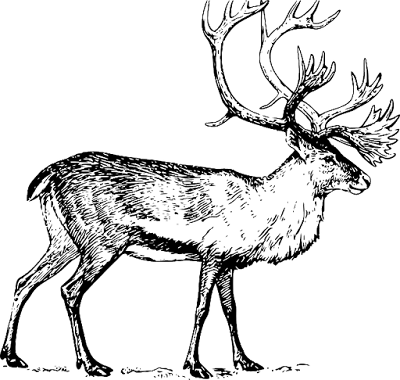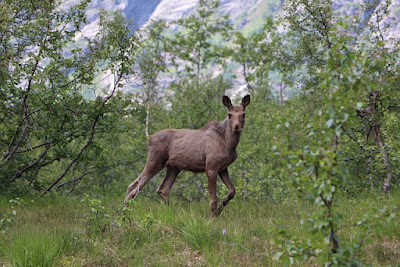Caribou: Arctic Wanderer
In the vast and frozen wilderness of the Arctic, roams a fantastic creature, a symbol of strength, resilience and adaptability. The caribou, also known as the reindeer in Europe and Asia, is a captivating species that has captured the imagination of humans for centuries. From its remarkable migratory patterns to its essential role in the Arctic ecosystem, the caribou embodies the delicate balance between nature and the environment.
Caribou species and distribution
Caribou (Rangifer tarandus) belong to the deer family, Cervidae, and are primarily found in the arctic and subarctic regions of North America, Europe, and Asia. There are several subspecies of caribou, each adapted to specific habitats and climates. In North America, they are mainly found in Alaska, Canada, and parts of the northern United States, while in Eurasia, they live in Scandinavia, Russia, and parts of northern China.
Physical characteristics
One of the most distinctive features of caribou is their impressive horns. Both the male (bull) and the female (cow) grow antlers, which are the largest and most complex of all deer species. These horns serve a variety of purposes, including fighting during mating season and digging in the snow to reach food during harsh winters. Additionally, caribou have hollow hair shafts that trap air, giving them buoyancy when swimming in icy water.
Great migration
One of the most awe-inspiring behaviors of caribou is their annual migration, which is one of the longest migrations undertaken by any land mammal. In spring and fall, herds of caribou migrate long distances in search of food and suitable breeding sites, often covering distances of up to 3,000 miles (4,800 km). This migratory phenomenon plays an important role in the Arctic ecosystem, as it helps to spread nutrients and control plant growth.
Ecological importance
Caribou are a key species in the Arctic ecosystem, which means they have a disproportionately large impact on the environment compared to their numbers. Their grazing helps maintain the delicate balance of tundra vegetation, preventing overgrazing and ensuring a diverse landscape for other species to thrive. Many predators, including wolves and bears, depend on caribou as a primary food source.
Cultural significance
For indigenous communities living in arctic regions, caribou hold immense cultural and spiritual significance. These majestic beings are often regarded as symbols of power, existence, and interconnectedness with nature. Indigenous peoples have relied on caribou for sustenance, clothing and tools for countless generations, and their traditional hunting practices have evolved into sustainable management strategies to protect caribou populations.
Conservation Challenges
Despite their resilience and adaptability, caribou face many conservation challenges in the modern world. Habitat destruction, climate change and industrial development pose significant threats to their populations. As habitats shrink and migratory routes are disrupted, caribou are more vulnerable to hunting and food shortages. Conservation efforts including habitat protection, sustainable hunting practices and research are essential to ensure their survival for future generations.
The caribou, a majestic and iconic arctic wanderer, is a testament to the wonders of nature and the delicate balance that sustains our planet. From its stunning horns to its epic migration, this species epitomizes the strength, adaptability and interconnectedness of all living beings. As we tackle the challenges of the 21st century, it is vital to protect and conserve these magnificent creatures and their fragile habitats for the benefit of the entire planet and generations to come. Only by understanding and valuing these incredible animals can we hope to ensure their place in the Arctic landscape for millennia to come.
Here are 20 interesting facts about caribou:
- Caribou, known in Europe and Asia as reindeer, are large members of the deer family (Cervidae) native to arctic and subarctic regions.
- The scientific name of caribou is Rangifer tarandus.
- Caribou are highly adapted to cold environments, with a dense coat of fur keeping them warm in temperatures down to −40 °F (−40 °C).
- Both male and female caribou grow horns, with males typically having larger and more elaborate horns than females.
- Caribou antlers are the fastest growing bones in the animal kingdom, growing at an impressive rate of about an inch per day.
- Unlike other deer species, some caribou populations undergo seasonal migration, traveling hundreds or even thousands of miles in search of food and suitable breeding sites.
- The porcupine caribou herd in North America's Arctic National Wildlife Refuge undertakes one of the longest land migrations, covering approximately 1,500 miles (2,400 km) each year.
- Caribou have specialized hooves that act like paddles in water and like snow boots on land, helping them to move efficiently in their diverse habitats.
- During migration, caribou can reach speeds of up to 50 mph (80 kph).
- Caribou are herbivores, and their diet consists mainly of lichens, mosses, grasses, sedges, and shrubs.
- Caribou's digestive system contains specialized enzymes that allow them to digest and extract nutrients from their unique diet of lichens and other tough plant material.
- Calves are born with their eyes open, so they begin to follow their mothers and herds immediately after birth.
- Caribou's eyes change color according to the season. During summer, their eyes are golden to protect them from the bright sun, while in winter, they turn blue to help them see in the dark arctic winter.
- Caribou have an excellent sense of smell, which helps them detect predators and locate food over long distances.
- Wolves are one of the primary predators of caribou. They often prey on weak or young individuals during migration or when caribou gather near their breeding sites.
- Caribou are known for their distinctive vocalizations, which include grunts, hisses, and clicking sounds, which they use to communicate with each other.
- Indigenous cultures in arctic regions have a deep cultural connection with caribou and depend on them for sustenance, clothing, and other essential materials.
- In some areas, caribou have been domesticated and used for transportation and as a source of food and clothing for indigenous communities.
- Caribou populations face threats from climate change, habitat loss due to human development, and increased hunting from increasing wolf populations in some areas.
- Conservation efforts, including protected areas, sustainable hunting practices and habitat protection, are critical to ensuring the survival of caribou populations and the fragile Arctic ecosystems in which they live.



Comments
Post a Comment